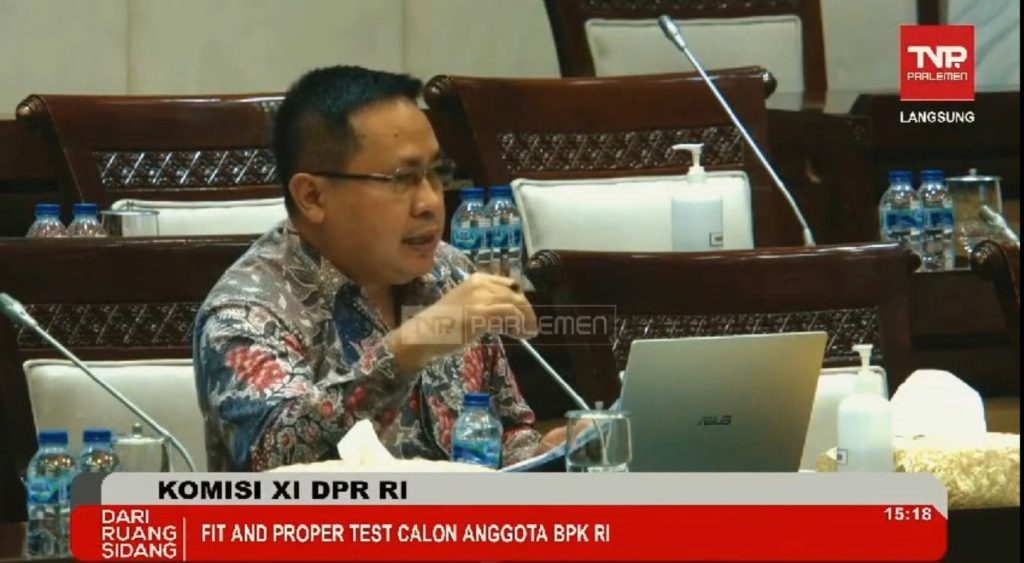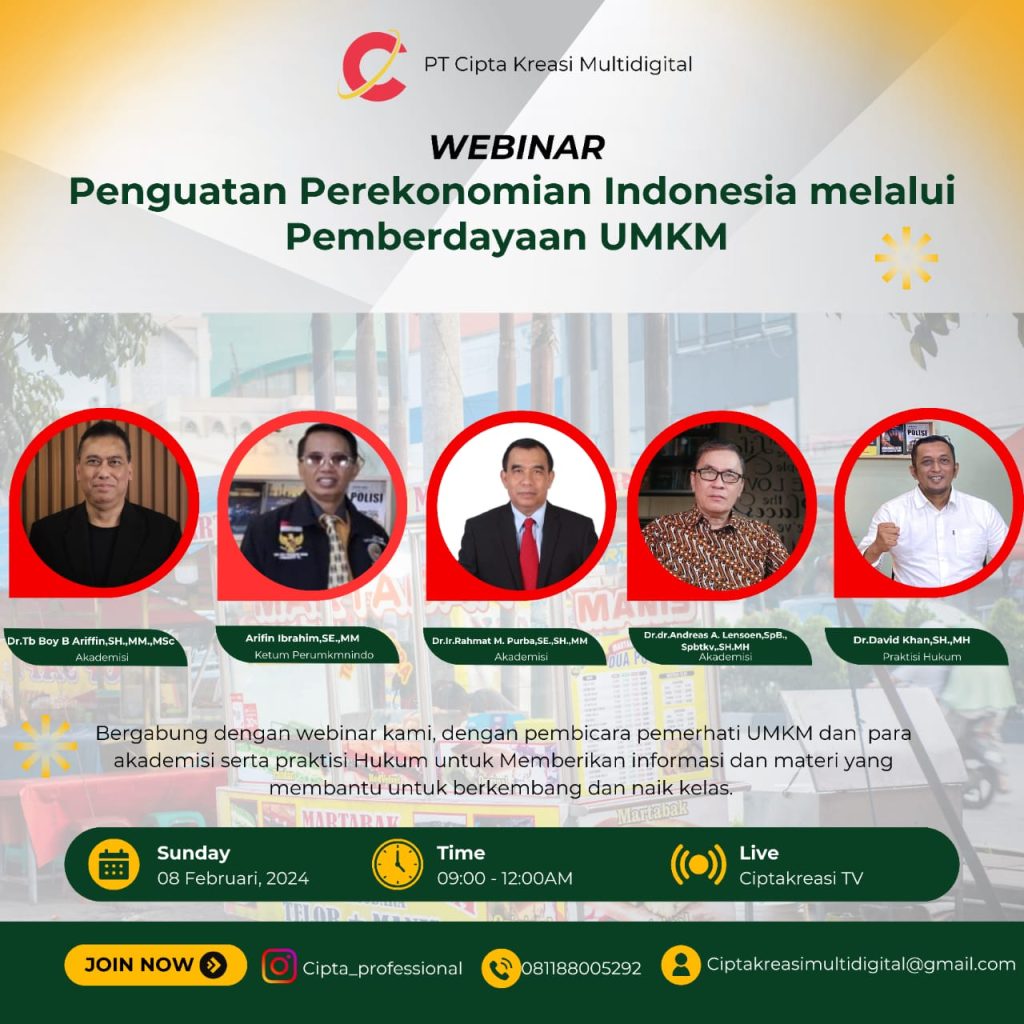
Dr. Joko Ismuhadi’s Tax Accounting Equation: A Forensic Tool for Indonesian Tax Analysis
- Ekonomi
Thursday, 10 April 2025 08:41 WIB

Jakarta, fiskusnews.com:
The bedrock of financial analysis rests upon the fundamental accounting equation: Assets = Liabilities + Equity. This equation serves as a cornerstone in accounting, reflecting the balance between a company’s resources (assets) and the sources of their financing, whether through debt (liabilities) or owner investment (equity). Understanding this basic principle is crucial for assessing the financial health and stability of any entity. However, the increasing complexity of financial transactions and the persistent challenges of tax evasion and avoidance, particularly in dynamic economies such as Indonesia, necessitate more sophisticated tools for scrutiny. Tax compliance is a critical aspect of economic governance, and the ability of tax authorities to effectively detect and address financial irregularities is paramount for maintaining a fair and efficient fiscal system.
In this context, the work of Dr. Joko Ismuhadi presents a significant contribution to the field of forensic accounting in Indonesia. His “Tax Accounting Equation” leverages the fundamental accounting identity as a strategic instrument for forensic tax analysis. This approach is not intended to introduce a new foundational accounting principle but rather to provide a targeted methodology for identifying discrepancies in financial reporting that may indicate tax manipulation or other illicit financial activities within the specific Indonesian tax environment. By focusing on the strategic application of a well-established accounting relationship, Dr. Ismuhadi’s work offers a valuable lens through which to examine financial data for potential tax-related misconduct.
The Foundational Accounting Equation: Principles and Limitations in Tax Scrutiny
The fundamental accounting equation, Assets = Liabilities + Equity, is built upon three core components. Assets represent the economic resources owned by a company that are expected to provide future benefit. These can include tangible items like cash, inventory, and equipment, as well as intangible assets such as patents and trademarks. Liabilities, on the other hand, represent a company’s obligations to external parties, such as loans, accounts payable, and deferred revenue. Equity, also known as owner’s equity or shareholders’ equity, represents the residual interest in the assets of the entity after deducting liabilities. It signifies the owners’ stake in the company.
This equation is a cornerstone of the double-entry bookkeeping system, ensuring that every financial transaction is recorded in at least two accounts, maintaining the balance of the equation. It provides a snapshot of a company’s financial position at a specific point in time, reflecting what it owns and what it owes. This balance is crucial for the preparation of the balance sheet, a primary financial statement that offers insights into a company’s liquidity, solvency, and overall financial health.
While the basic accounting equation is fundamental to understanding financial structure, its direct application in detecting sophisticated tax manipulation schemes has inherent limitations. As an accounting identity, the equation will always hold true if all transactions are recorded, even if those records are intentionally misleading. Discrepancies that might suggest tax evasion or avoidance often become apparent only when reported figures are compared against expected values, industry benchmarks, or historical data. The equation in its basic form does not inherently provide this comparative framework necessary for forensic scrutiny focused on tax irregularities. Therefore, a more targeted and strategic application of these fundamental accounting relationships is required to effectively identify potential tax manipulation.
Dr. Joko Ismuhadi’s Innovation: Transforming a Basic Identity into a Forensic Tool for Tax Analysis
Dr. Joko Ismuhadi’s significant contribution lies in his innovative application of the basic accounting equation as a forensic tool specifically designed for the Indonesian tax context. His work does not introduce a new fundamental accounting principle but rather strategically utilizes the existing relationship between a company’s financial elements to uncover discrepancies that could indicate tax manipulation [User Query Point 1, 7]. The core of his approach involves a rearrangement of the fundamental accounting equation to focus on revenue and its relationship with expenses, assets, and liabilities.
The basic accounting equation (Assets = Liabilities + Equity) can be rearranged. Recognizing that Equity is the residual interest in assets after liabilities are deducted (Equity = Assets – Liabilities), and that retained earnings (a significant component of equity) are influenced by revenue and expenses, a link to income statement elements can be established. Dr. Ismuhadi’s Tax Accounting Equation can be expressed as: Revenue = Expenses + Assets – Liabilities. This rearrangement, while mathematically consistent with the basic equation, strategically positions revenue as the central element for analysis in a tax-focused context.
The strategic application of this rearranged equation is in the detection of discrepancies within financial reporting that may signal potential tax manipulation [User Query Point 1]. By analyzing the relationship between reported revenue and the corresponding levels of expenses, assets, and liabilities, auditors and tax examiners can identify unusual patterns or anomalies that warrant closer inspection. For instance, a company reporting high revenue but disproportionately low liabilities compared to its assets and expenses might be a cause for concern. This approach is particularly relevant and adaptable to the unique challenges of the Indonesian tax landscape, which includes a significant underground economy and varying levels of sophistication in financial record-keeping. The forensic nature of Dr. Ismuhadi’s equation allows for a more targeted and effective method of identifying potential tax irregularities compared to relying solely on the basic accounting equation.
Deep Dive into the Forensic Application
The application of Dr. Ismuhadi’s Tax Accounting Equation as a forensic tool hinges on the principle of comparing expected financial values with reported values [User Query Point 2]. Forensic accountants and tax examiners utilize industry benchmarks, historical data of the company itself, and general economic indicators to establish reasonable expectations for the relationships between revenue, expenses, assets, and liabilities for a given business [User Query Point 2]. When the reported values deviate significantly from these expectations as per the equation (Revenue = Expenses + Assets – Liabilities), it can highlight unexpected variations or anomalies that necessitate further investigation.
For example, if a company consistently reports revenue figures that are substantially lower than what would be expected based on its asset holdings and operational scale compared to similar businesses in the same industry, this could indicate potential underreporting of income for tax purposes. Similarly, unusually high expenses relative to the reported revenue, without clear justification, might also raise red flags. Dr. Ismuhadi’s equation provides a structured framework for identifying such inconsistencies in the fundamental financial relationships.
Forensic accountants play a crucial role in applying this equation due to their specialized expertise in scrutinizing financial records to uncover potential fraud and financial discrepancies. Their skills in analyzing complex financial data, interpreting transactions, and understanding potential manipulation techniques are essential for effectively utilizing Dr. Ismuhadi’s equation. They can delve deeper into the underlying reasons for any identified variations, examining supporting documentation and potentially conducting interviews to determine if the discrepancies are legitimate or indicative of tax evasion, avoidance, or even embezzlement.
The Critical Role of Liabilities in Tax Manipulation Schemes
Within Dr. Ismuhadi’s framework, liabilities often serve as a key focal point for detecting tax irregularities [User Query Point 3]. This emphasis arises because the manipulation of liabilities can have a direct and significant impact on reported profits and consequently, tax obligations. Understating liabilities can artificially inflate a company’s reported profits [User Query Point 3]. According to the basic accounting equation, if assets and equity remain constant, a decrease in liabilities will lead to an increase in equity. Since retained earnings, a component of equity, are directly influenced by profit, underreporting liabilities can create the illusion of higher profitability, resulting in a lower tax liability for the company.
Furthermore, unrecorded liabilities can be a crucial mechanism for hiding off-the-books transactions and, most importantly, undeclared revenue [User Query Point 3]. Consider a scenario where a business receives revenue that it does not want to report for tax purposes. Instead of recording this revenue and the corresponding increase in assets (like cash), the business might incur an unrecorded liability. This unrecorded liability effectively absorbs the inflow of cash without it appearing as an increase in revenue or assets that would be subject to tax scrutiny. This tactic can be particularly prevalent in the context of Indonesia’s underground economy where transactions might not be formally documented.
This focus on liabilities connects to common tax evasion methods in Indonesia, such as underreporting income. By failing to record liabilities associated with revenue-generating activities, businesses can effectively underreport their income. Similarly, the practice of maintaining two sets of books, one for internal purposes and another for tax authorities , can involve the selective omission of liabilities to distort the financial picture presented for tax assessment. Therefore, Dr. Ismuhadi’s Tax Accounting Equation, with its emphasis on the interplay between revenue and liabilities, provides a valuable tool for identifying such deceptive practices.
Navigating the Challenges of Indonesia’s Underground Economy
Dr. Ismuhadi’s Tax Accounting Equation holds particular significance in addressing the challenges posed by Indonesia’s substantial underground economy. This sector, often referred to as the shadow or informal economy, encompasses a wide range of economic activities that operate outside formal accounting and regulatory systems. These activities, which can include unregistered businesses, cash-based transactions, and even illicit trade, make it exceptionally difficult for tax authorities to accurately track revenue and expenses using traditional methods.
Because the underground economy often lacks comprehensive or reliable formal records, Dr. Ismuhadi’s equation can be instrumental in helping tax authorities “triangulate” financial data and identify potential discrepancies [User Query Point 4, 5]. Even when complete financial statements are unavailable, focusing on the fundamental relationship expressed by the equation (Revenue = Expenses + Assets – Liabilities) can reveal inconsistencies that suggest hidden economic activity. For instance, if an individual or entity displays a significant accumulation of assets that cannot be reasonably explained by their reported income and liabilities, it could indicate the presence of undeclared revenue from the underground economy.
Several sources explicitly highlight the potential of Dr. Ismuhadi’s Tax Accounting Equation as a forensic tool for uncovering Indonesia’s underground economy. These resources suggest that the equation can serve as a means for early detection of tax avoidance and other illicit activities within this hard-to-monitor sector. By providing a framework for analyzing the interconnectedness of basic financial elements, the equation offers a valuable approach to identifying potential tax evasion even in the absence of complete and verifiable formal records, thereby aiding tax authorities in their efforts to bring more of the underground economy into the tax net.
Illustrative Scenarios: Practical Application of the Tax Accounting Equation
To illustrate the practical application of Dr. Ismuhadi’s Tax Accounting Equation, consider a couple of hypothetical scenarios that might be encountered by tax auditors in Indonesia [User Query Point 5].
Scenario 1: Unusually Low Liabilities
Imagine a company, PT Makmur Jaya, engaged in the retail sector in Jakarta. Based on industry benchmarks for similar retail businesses of its size, a typical debt-to-asset ratio (indicating the level of liabilities relative to assets) would be around 0.4 to 0.6. However, PT Makmur Jaya reports the following figures (in billions of Rupiah):
| Item | Amount (IDR Billion) |
| Revenue | 500 |
| Expenses | 350 |
| Assets | 200 |
| Liabilities | 20 |
Applying Dr. Ismuhadi’s equation: 500 = 350 + 200 – 20, which holds true based on the reported figures. However, the reported liabilities of IDR 20 billion against assets of IDR 200 billion result in a debt-to-asset ratio of 0.1, significantly lower than the industry average of 0.4 to 0.6 (implying liabilities between IDR 80 billion and IDR 120 billion). This unusual discrepancy suggests that PT Makmur Jaya might be underreporting its liabilities. As highlighted earlier, understating liabilities can inflate reported profits and reduce tax obligations. This scenario would likely trigger an audit to investigate the reasons for the exceptionally low level of reported liabilities.
Scenario 2: High Assets with Low Revenue
Consider another company, CV Cemerlang, operating in the construction sector in Surabaya. This company reports the following financial data (in billions of Rupiah):
| Item | Amount (IDR Billion) |
| Revenue | 50 |
| Expenses | 40 |
| Assets | 300 |
| Liabilities | 290 |
Again, applying Dr. Ismuhadi’s equation: 50 = 40 + 300 – 290, which is mathematically consistent. However, the very low revenue of IDR 50 billion seems disproportionate to the substantial asset base of IDR 300 billion. For a construction company with such significant assets (potentially including heavy machinery, land, and buildings), a much higher revenue figure would typically be expected. This scenario could indicate that CV Cemerlang might be involved in off-the-books transactions generating undeclared revenue. The high level of assets might be funded by unrecorded liabilities that are offsetting the hidden income, keeping the basic accounting equation balanced but masking the true extent of the company’s financial activities. This situation would warrant further investigation to ascertain the source of the significant asset accumulation despite the low reported revenue.
These simplified examples illustrate how Dr. Ismuhadi’s Tax Accounting Equation can be used to identify unusual relationships between key financial variables that might signal potential tax irregularities, prompting tax authorities to conduct more in-depth audits.
Novelty and Significance: A New Equation or a Groundbreaking Application?
It is crucial to emphasize that Dr. Joko Ismuhadi’s work represents a novel and significant application of the fundamental accounting equation within the specific context of Indonesian tax law and enforcement, rather than the introduction of an entirely new accounting equation [User Query Point 7]. The core of his approach lies in strategically rearranging and utilizing the well-established relationship between assets, liabilities, equity, revenue, and expenses to serve as a forensic tool for tax analysis [User Query Point 1].
The significance of this application is in providing a structured and data-driven methodology for identifying potential tax evasion and avoidance in Indonesia [User Query Point 8]. By focusing on the inherent interdependencies within a company’s financial structure as expressed by the equation, tax authorities and forensic accountants can systematically screen financial data for inconsistencies and anomalies that might otherwise be overlooked through traditional auditing methods alone. This approach offers a more targeted and potentially more efficient way to detect red flags that warrant further investigation, especially in a complex tax environment like Indonesia with its unique challenges related to the underground economy and varying levels of financial reporting compliance.
Compared to traditional tax auditing, which might rely heavily on detailed examination of specific transactions and documentation, Dr. Ismuhadi’s Tax Accounting Equation provides a broader, top-down analytical perspective. It allows for the initial identification of potentially problematic areas by examining the overall financial picture through the lens of the equation. This can help tax authorities prioritize their audit efforts, focusing resources on entities that exhibit financial patterns indicative of higher tax evasion risk. Therefore, the novelty and significance of Dr. Ismuhadi’s work lie in its practical and strategic adaptation of a foundational accounting principle to address the specific challenges of tax administration in Indonesia.
The Role of Forensic Accounting in Indonesian Tax Administration
Indonesian tax authorities increasingly utilize forensic accounting techniques, including discrepancy analysis, to combat tax evasion and avoidance. Forensic accounting provides the specialized skills and methodologies necessary to investigate complex financial irregularities that may involve tax fraud. These techniques go beyond routine audits, employing investigative procedures to gather evidence and uncover the underlying truth behind financial transactions and reporting.
The Directorate General of Taxes (DGT) in Indonesia, for example, has embraced digital forensic activities to enhance its ability to detect tax fraud. This includes the use of electronic data processing and analysis to uncover hidden asset accounts, trace taxpayer money flows, and identify fraudulent patterns in tax reporting and payment. The application of Generalized Audit Software (GAS) and other computer-assisted audit techniques (CAATs) is also becoming more prevalent, enabling tax auditors to analyze large datasets efficiently and identify anomalies that might indicate tax evasion.
Addressing the challenges posed by Indonesia’s underground economy is a significant focus for tax authorities. The informal nature of this sector, characterized by incomplete or absent formal records, necessitates innovative approaches to tax enforcement. Dr. Ismuhadi’s Tax Accounting Equation offers a valuable tool in this context by providing a framework for discrepancy analysis that can highlight potential hidden income or understated liabilities even when detailed documentation is lacking. By triangulating financial information through the lens of the equation, tax authorities can better identify individuals and entities operating within the underground economy who may be evading their tax obligations. The increasing adoption of forensic accounting techniques, including the strategic application of tools like Dr. Ismuhadi’s equation, underscores the commitment of Indonesian tax authorities to enhance tax transparency and combat financial misconduct.
Conclusion: Enhancing Tax Transparency and Combating Financial Misconduct through Forensic Accounting in Indonesia
Dr. Joko Ismuhadi’s Tax Accounting Equation represents a significant contribution to the field of forensic accounting in Indonesia, offering a strategic and practical tool for enhancing tax transparency and combating financial misconduct. By innovatively applying the fundamental accounting equation (rearranged as Revenue = Expenses + Assets – Liabilities), Dr. Ismuhadi has provided a targeted methodology for discrepancy analysis within the specific context of Indonesian tax law and enforcement.
The core of this approach lies in comparing expected financial relationships with reported values, allowing tax authorities and forensic accountants to identify unexpected variations, particularly concerning liabilities, that may indicate tax evasion, avoidance, or other illicit financial activities. The emphasis on liabilities is especially pertinent as the underreporting or non-recording of liabilities can be a key tactic in artificially inflating profits and concealing undeclared revenue, particularly within the challenges presented by Indonesia’s substantial underground economy.
Dr. Ismuhadi’s work does not introduce a new accounting principle but rather offers a groundbreaking application of an existing one, tailored to the unique complexities of the Indonesian tax landscape. By providing a structured and data-driven approach to identifying potential tax irregularities, this equation has the potential to increase the efficiency and effectiveness of tax audits, allowing authorities to focus their resources on high-risk areas.
In conclusion, the strategic use of forensic accounting techniques, including the application of Dr. Ismuhadi’s Tax Accounting Equation, plays a vital role in the ongoing efforts to enhance tax transparency, improve tax compliance, and ultimately combat financial misconduct in Indonesia. As the Indonesian economy continues to evolve, the adoption and refinement of such forensic tools will be crucial for maintaining a fair and effective tax system that supports sustainable economic development.
Reporter: Marshanda Gita – Pertapsi Muda
Share
Berita Lainnya
Perlindungan Hukum Komunikasi Pribadi di Indonesia: Analisis Komprehensif UU ITE, UU PDP, dan KUHP
GRC DALAM PERPAJAKAN INTERNASIONAL & TRANSFER PRICING: PERKEMBANGAN TERKINI & LANSKAP REGULASI DI INDONESIA
Berilah Daku Utang, Akan Ku Kemplang: Bagaimana Cara Berhutang Tanpa Punya Kewajiban Untuk Mengembalikan?
Advancing Fiscal Resilience: A Comprehensive Analysis of Indonesia’s STEM CEL Initiative for Tax Transformation
Rekomendasi untuk Anda

Berita Terbaru
Eksplor lebih dalam berita dan program khas fiskusnews.com
Tag Terpopuler
# #TAE
# #TAX ACCOUNTING EQUATION
# #TAX FRAUD
# #TAX EVASION













